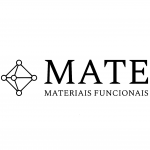Lines of research
1. Batteries and Supercapacitors
The group develops new materials for application in energy storage devices, such as batteries and supercapacitors. Materials of interest for battery applications, like LiFePO4, are produced and optimized to achieve the best performance. Processes for slurry preparation, electrode deposition, and drying are studied, as well as the electrochemical performance of materials and devices. The group also conducts computational simulations of the physical properties of electrodes and devices, along with the characterization of the physical properties of constituent materials using various physicochemical techniques. Additionally, the group has expertise in the electrodeposition of Prussian blue films (Fe4[Fe(CN)6]3) and its analogues, which have applications in batteries, supercapacitors, and resistive switching.
2. Perovskites Applied to Photovoltaic Devices and Piezoelectric Materials
Perovskites are materials with physical properties that make them promising for applications in various areas of technological interest, being especially studied for photovoltaic devices due to their high efficiency in devices, low production cost, and ease of scaling. At MATE, organic and inorganic perovskites are synthesized for applications not only as active layers in photovoltaic devices but also as charge transport layers and in other areas such as piezoelectricity, photonics, and magnetism. The materials studied include perovskites of CsSnCl3, MAPbI3, and lanthanum cobalt manganites.
3. Synthesis of Semiconductor Materials
Materials such as bismuth selenide (Bi2Se3), Prussian blue (Fe4[Fe(CN)6]3) and its analogues, copper oxides (Cu2O), titanium oxides (TiO2), nickel oxides (NiO and Ni(OH)2), and bismuth selenide (Bi2Se3) are grown through electrochemical synthesis. The study focuses include determining the growth mechanisms of these materials and analyzing their physical properties to tailor them for applications in areas such as photovoltaic devices, thermoelectric generators, spintronics, and resistive switching.






